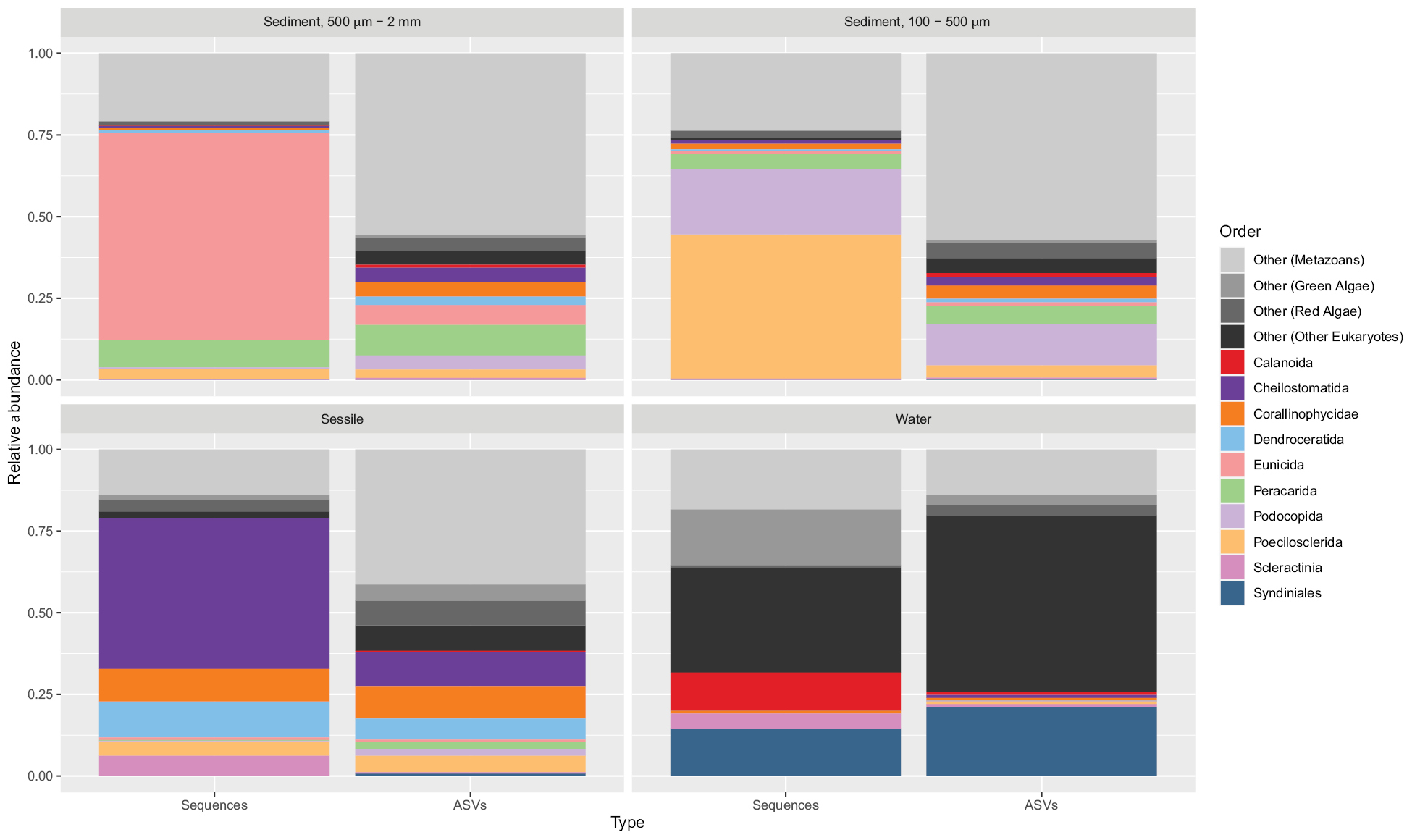
|
||
|
Relative ASV abundance of the ten most common orders sequenced for 18S rDNA (V1–V3). Samples were obtained from four sample types (500 μm-2 mm sediment fraction, 100-500 μm sediment fraction, sessile material scrapings; and water) collected from nine sites at Palmyra Atoll (Fig. 1). The top ten orders were Calanoida (copepods), Cheilostomatida (bryozoans), Corallinophycidae (red algae), Dendroceratida (sponges), Eunicida (polychaete worms), Peracarida (malacostracan crustaceans), Podocopida (ostracod crustaceans), Poecilosclerida (demosponges), Scleractinia (stony corals), and Syndiniales (dinoflagellates). Bar heights show the relative abundance of each taxon in terms of both sequences and number of ASVs. Relative abundances of ASVs not in the top ten orders and classified as metazoans, green algae, red algae, and other eukaryotic groups are shown in gray. |